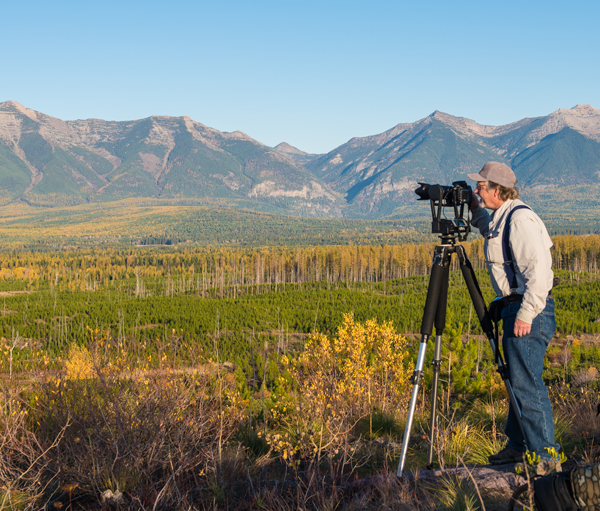I imagine the image, conceptually designing it with visualized light and lines. Drawing from experience, I select a physical location and the photographic equipment and techniques needed to make the vision real.
I use high-resolution Nikon professional digital equipment. My current go to combination is the Nikon D850 paired with the AF-S NIKKOR 24-70mm f/2.8E ED VR lens. This allows me to capture images at at crazy sharp high resolution and detail.
I use an a unique process called giga-pixel photography to create and print the really big images, taking tens to hundreds of photographs and combing them into a large digital image containing millions of pixels.
When there is a need, I also use specialized lenses or filters. The most common are circular polarizing filters from Breakthrough Photography and graduated neutral density filters from Singh-Ray. None of these alter or add colors, instead they help manage the dynamic range of light encountered in the image. Once the location is established, with the right equipment on hand and the desired light present, a digital image is composed bringing the visualization to life. Careful planning and preparation means I only take two or three shots of the visualized image. But with more difficult scenes or when the visualization hasn’t quite jelled, I will take a series of images, or digital “sketches” to help identify the important elements and diminish the non-essential. When I don’t feel the need to keep sketching, then I take the final image.
In post-processing and printing I continue making subtle adjustments bringing the image to light and true to the vision. The result is not an “exact documentary photograph,” rather it is the product of a creative dialogue between the artist/photographer and subject. It becomes a finished image when it feels right, when it matches the vision and feels alive.

